Abstract
When C14 carboxyl indoleacetic acid (IAA) is transported through Avena coleoptile sections a fraction of the activity becomes bound. The nature of this bound IAA has been investigated. Upon extraction with solvents and chromatography a substance having the RF of IAA in 4 solvents was detected. No evidence could be found for the formation of indoleacetyl conjugates. In pea stem sections subjected to a similar experimental regime good evidence was obtained for the occurrence of conjugates. When IAA was supplied exogenously to coleoptile sections floating in solutions the occurrence of conjugates was shown to be dependent on the presence of the primary leaf. In its absence no conjugates could be detected.
On grinding coleoptile sections and subsequent centrifugation at 240 × g the radioactivity was found to be in the tissue fraction as opposed to the supernatant. The radioactivity cannot be removed from the tissue by extraction with water, buffer solution or treatment with ribonuclease. It is readily removed by 10% urea, crystalline trypsin and chymotrypsin. It is therefore concluded that IAA becomes bound to a protein. Bound IAA does not appear to be able to cause growth in Avena coleoptile sections.
Full text
PDF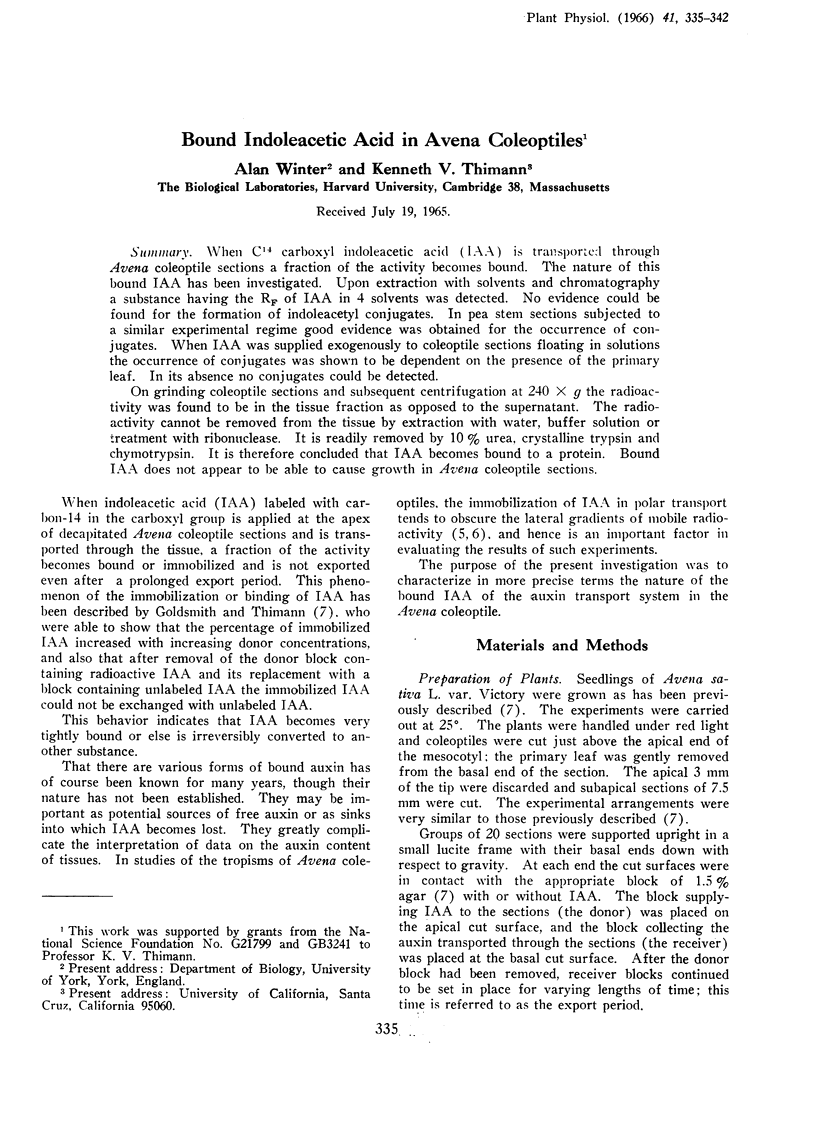
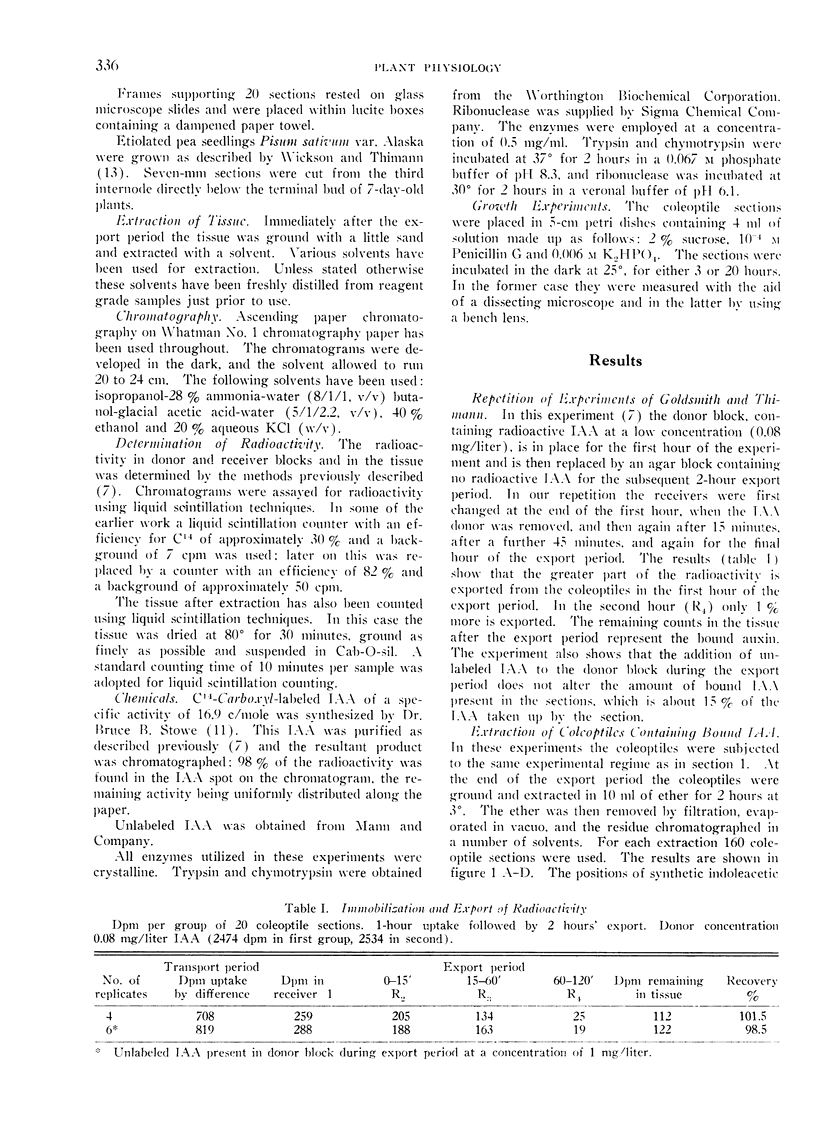
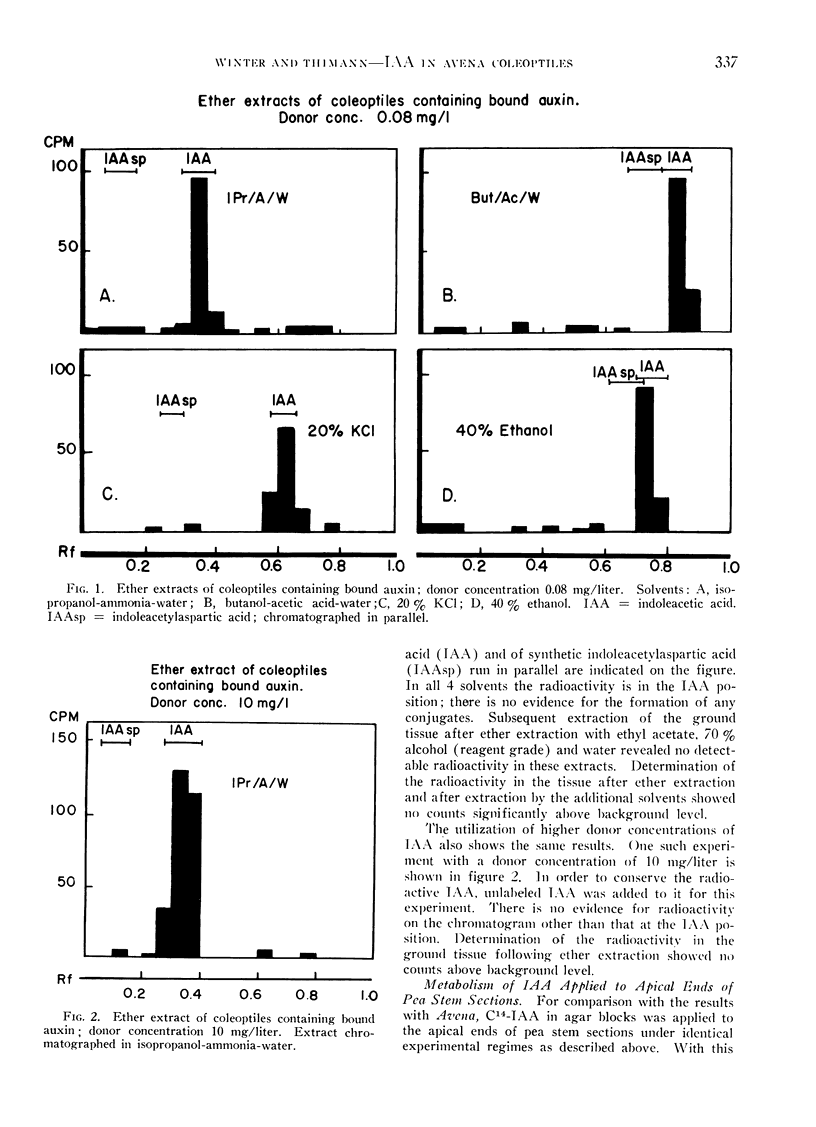
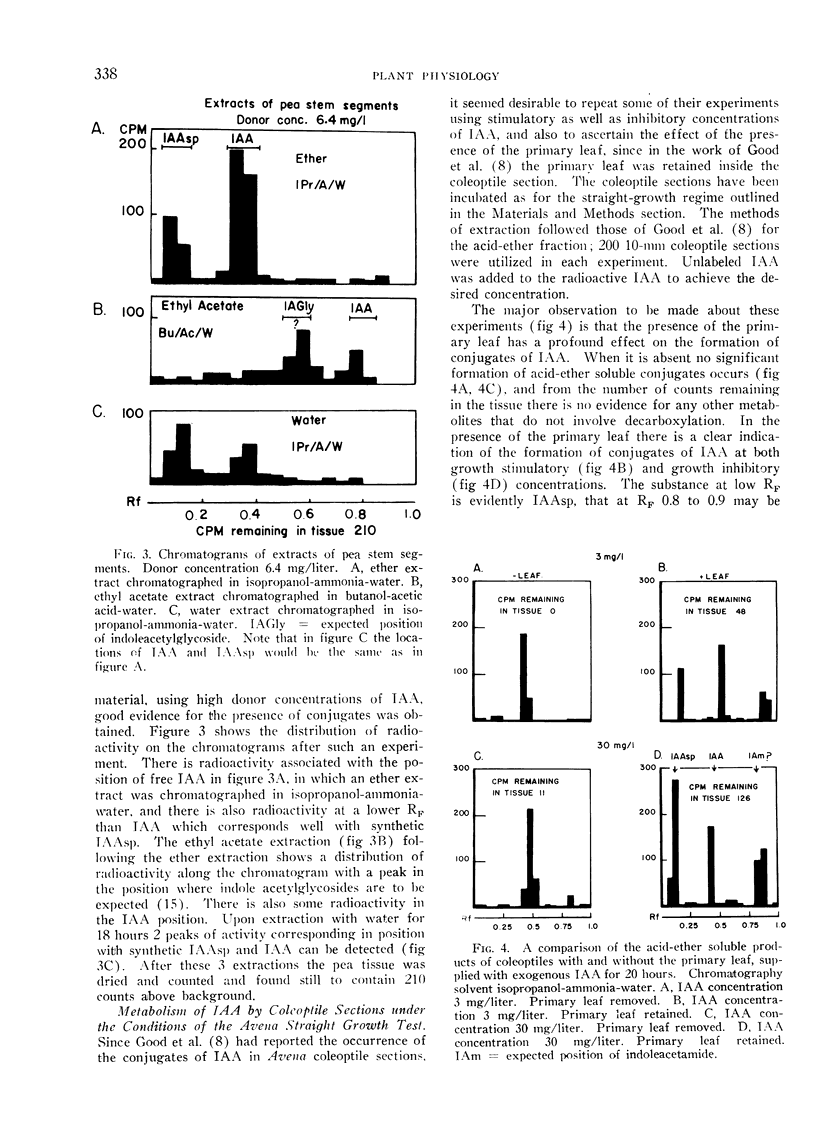
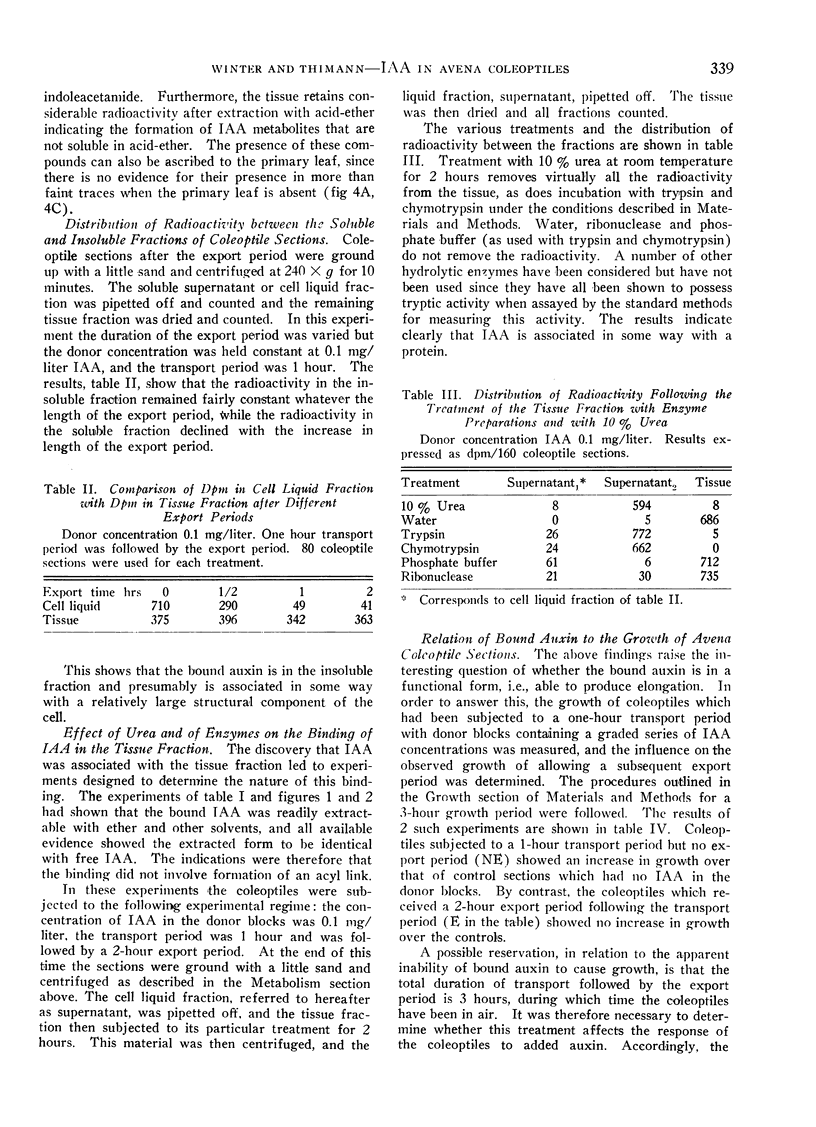
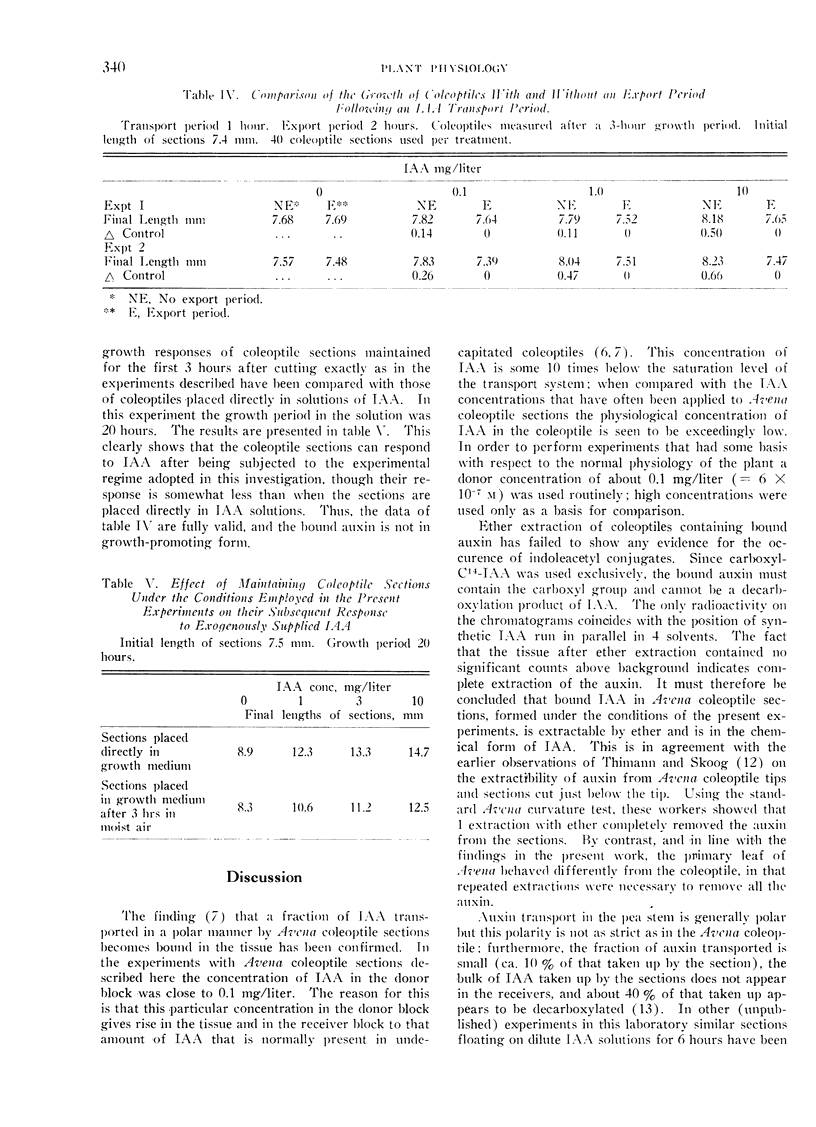
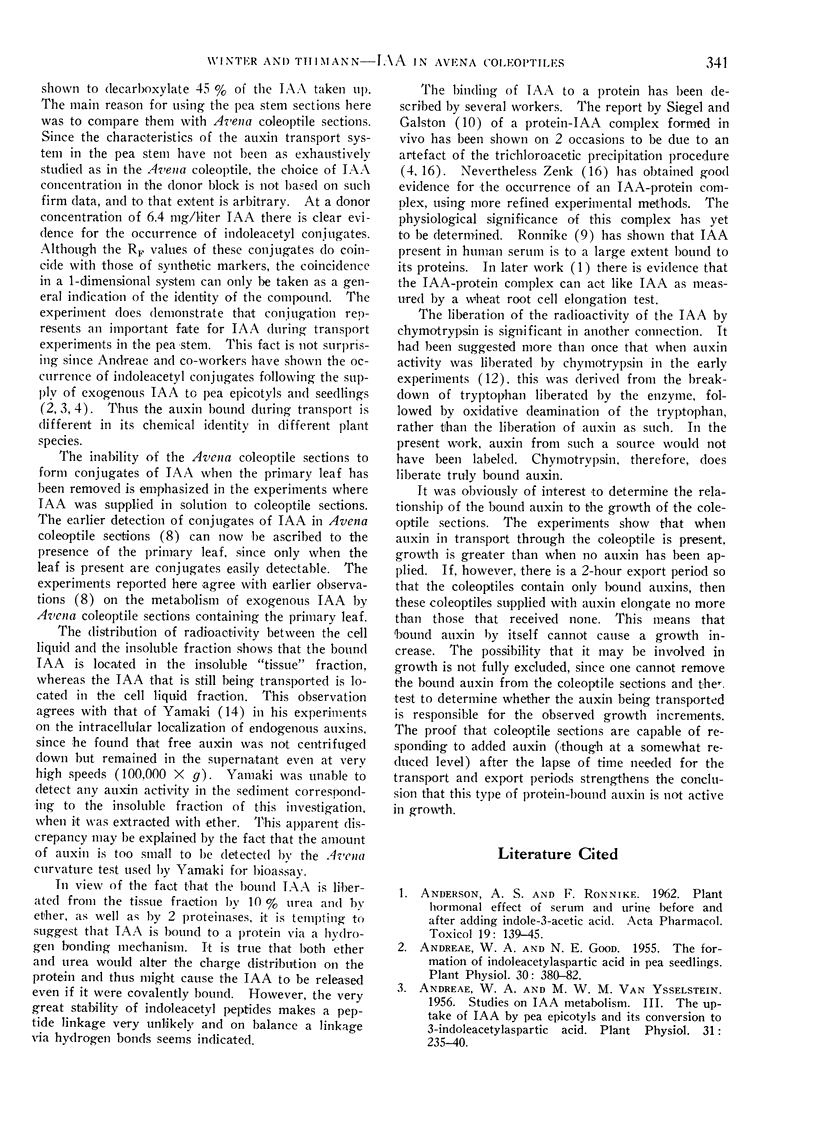
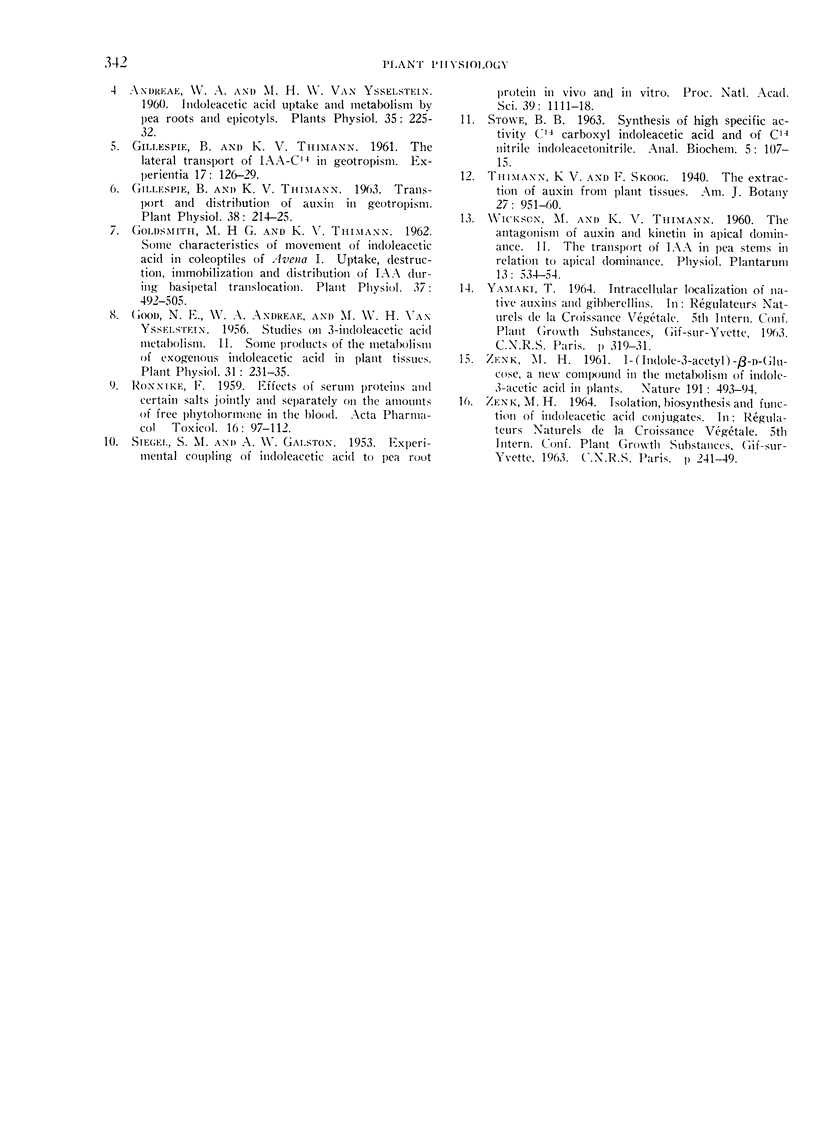
Selected References
These references are in PubMed. This may not be the complete list of references from this article.
- ANDERSEN A. S., RONNIKE F. Plant hormonal effect of serum and urine before and after adding indole-3-acetic acid. Acta Pharmacol Toxicol (Copenh) 1962;19:139–145. doi: 10.1111/j.1600-0773.1962.tb01688.x. [DOI] [PubMed] [Google Scholar]
- Andreae W. A., Ysselstein M. W. Studies on 3-Indoleacetic Acid Metabolism. III. The Uptake of 3-Indoleacetic Acid by Pea Epicotyls and Its Conversion to 3-Indoleacetylaspartic Acid. Plant Physiol. 1956 May;31(3):235–240. doi: 10.1104/pp.31.3.235. [DOI] [PMC free article] [PubMed] [Google Scholar]
- GILLESPIE B., THIMANN K. V. The lateral transport of indoleacetic acid-C14 in geotropism. Experientia. 1961 Mar 15;17:126–129. doi: 10.1007/BF02160825. [DOI] [PubMed] [Google Scholar]
- Gillespie B., Thimann K. V. Transport & Distribution of Auxin during Tropistic Response. I. The Lateral Migration of Auxin in Geotropism. Plant Physiol. 1963 Mar;38(2):214–225. doi: 10.1104/pp.38.2.214. [DOI] [PMC free article] [PubMed] [Google Scholar]
- Helen M., Goldsmith M., Thimann K. V. Some Characteristics of Movement of Indoleacetic Acid in Coleoptiles of Avena. I. Uptake, Destruction, Immobilization, & Distribution of IAA During Basipetal Translocation. Plant Physiol. 1962 Jul;37(4):492–505. doi: 10.1104/pp.37.4.492. [DOI] [PMC free article] [PubMed] [Google Scholar]
- ZENK M. H. I-(Indole-3-acetyl)-beta-D-glucose, a new compound in the metabolism of indole-3-acetic acid in plants. Nature. 1961 Jul 29;191:493–494. doi: 10.1038/191493a0. [DOI] [PubMed] [Google Scholar]


